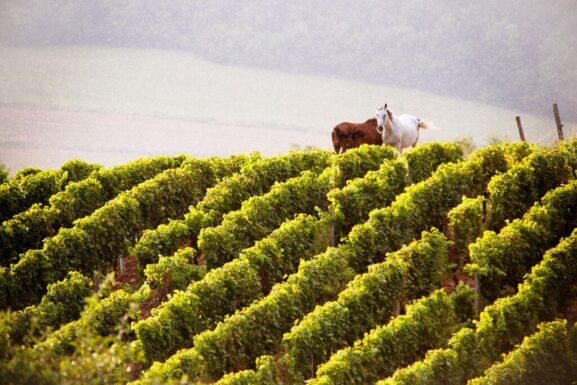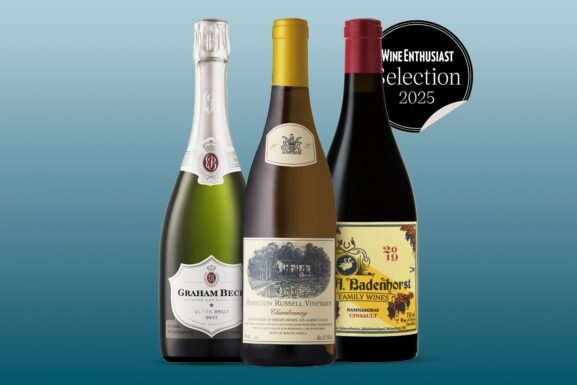Culture: Cider’s Fall Dilemma: Can It Overcome Its Seasonal Reputation?
When you think of cider, what comes to mind? Autumn, likely. Perhaps leaves turning beautiful colors, flannel shirts, pumpkin patches and Thanksgiving dinner pairings. This is all to say: For many people, cider conjures the same seasonal scenes as pumpkin spice lattes and cable-knit sweaters. It’s certainly a positive association. After all, who doesn’t love fall coziness? But it’s also a problem—one that limits cider’s potential popularity and relegates it to a seasonal niche.
You May Also Like: The Original Thanksgiving Drink? Hard Cider
Don’t get me wrong: Cider has a magical connection to the autumn apple-picking season. Across the country, various regional “Cider Week” celebrations happen mostly in October and November. But grapes are also harvested in the fall—no one limits the drinking of Cabernet Sauvignon or Pinot Grigio to the window between September and December. In some ways, cider struggles with a seasonal issue similar to that of Prosecco or rosé, which are available year-round but don’t enter the mainstream drinking conversation until the weather turns warm.
Earlier this year, beer and cider writer Beth Demmon made a solid pitch for enjoying cider in the summer in the Washington Post. Demmon noted that cider’s perceived fall popularity is actually a fallacy: Between May 22, 2022, and April 23, 2023, Demmon reported, the highest period of off-premise hard cider sales in the United States was a four-week stretch from June 20 to July 17. Squarely in the middle of summer, the cider category pulled in more than $43 million. Fall was only the next best-selling season, with the period between Oct. 10 to Nov. 16—prime harvest time—yielding over $40 million.
Demmon spoke with a Virginia cidermaker who told her, “Virginia Cider Week, where we do the most promotion of cider in the state, is right in the middle of harvest season. People are already excited about apples. We need to do more promotion during [other] months.”
While I was reporting my book, The Cider Revival, almost every cidermaker I spoke to echoed this sentiment. “Fall seems like the only time of year to get people interested in cider,” says Melissa Madden, who makes Open Spaces Cider in New York’s Finger Lakes. “It’s so hard to reach new consumers outside the fall season.”
The reality of fall for an orchardist or cidermaker is filled with the essential work of harvesting and pressing apples. But there’s also promotional appearances at cider festivals, hand selling at farmers markets and perhaps even running U-Pick orchards on weekends. “It’s crazy and it can be a pain in the ass,” Madden continues. “It’s our busiest work season and we also have to be promoting because it’s the only time of year that people are thinking about apples.”
Got Apples? This TikTok-Famous Apple Skillet Cake Is Too Easy and Delicious to Ignore
Worldwide, other cider cultures don’t suffer from the fall stigma. In the Basque region of Spain, for instance, cider season runs from January through April, which is the only time many cider houses are even open. Ironically, in the U.K., Demmon noted, some cideries started a campaign Cider Is Not Just For Summer, since that’s when their cider season happens to be. There, the question is how to position cider as a colder-weather drink.
To its credit, the American Cider Association has been working to counterbalance cider’s fall dilemma. For several years, the trade group for U.S. cidermakers has been promoting cider as a Fourth of July beverage. It makes sense—cider has deep American roots and was the most popular beverage in colonial times.
Perhaps another reason for shifting cider’s focus to summer is the reality that many places in the U.S. don’t really have autumn anymore. If you live in an area where you get a crisp fall day that’s cold enough to wear a sweater, consider yourself lucky. For many of us, summer weather persists well into the fall. These days, it may as well be Dry July in October.
You can follow Jason Wilson on Wine Enthusiast and click here to subscribe to his Everyday Drinking newsletter, where you’ll receive regular dispatches on food, travel and culture through the lens of wine and spirits.
Last Updated: September 21, 2023
Like what you’re reading? Learn more about:


